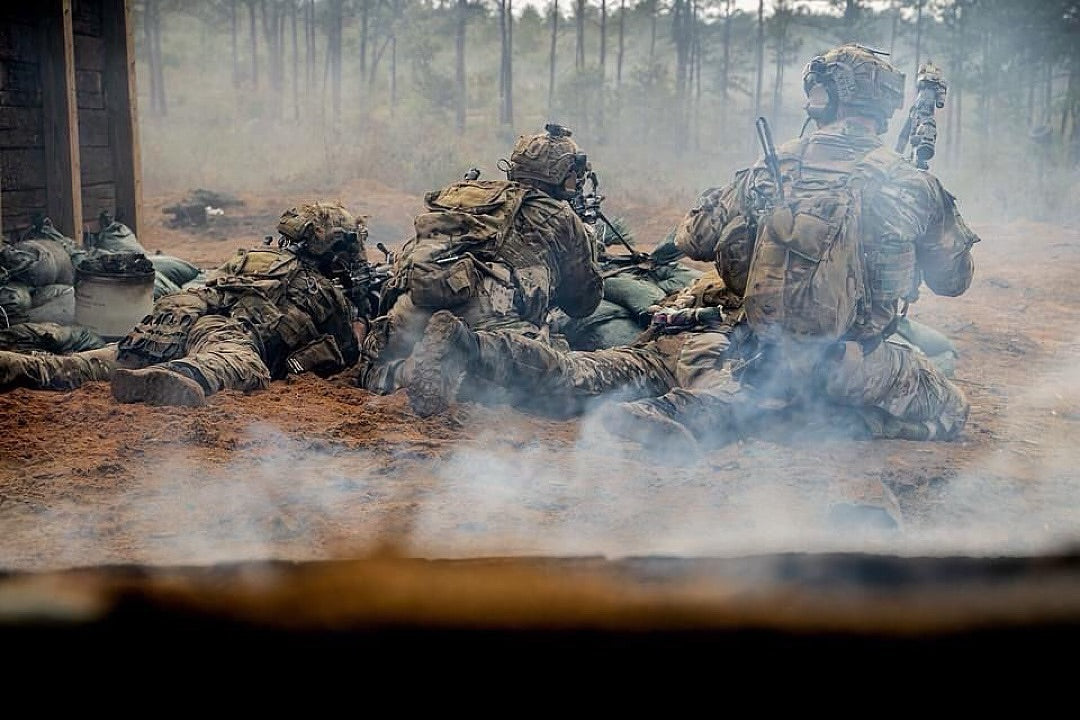The Role of Camouflage in Special Operations: Innovations and Strategic Stakes
Becoming Invisible: An Old Idea, New Means
In warfare, hiding often means surviving. Since the dawn of combat, fighters have tried to fool the eye. War paint. Leaves. Nets. Anything to disappear.
But today, camouflage goes far beyond appearance. It includes light, heat, even invisible signals. Elite units – Navy SEALs, Spetsnaz, GIGN, COS – know this better than anyone. Behind enemy lines, shadow is their strongest ally.
Thanks to nanotech and quantum physics, these soldiers use near-futuristic techniques. The goal: escape every form of detection. Complete the mission. Stay unseen. Unheard. Undetected.
1. Dynamic Camouflage: Materials That Change Appearance
Smart Fabrics Inspired by Cephalopods
Today’s fabrics shift color in real time. Polymers and electroactive pigments react to the surroundings. The textile adapts. Like a chameleon. Like a cuttlefish.
Researchers mimic these animals to create “living” camouflage. The company Hyperstealth Biotechnology has developed a prototype: Quantum Stealth. This material bends light. It doesn’t reflect—it vanishes.
It sounds like science fiction, but it’s not. This fabric could soon outfit special forces. Staying visible might become a choice, not a limitation.
The Challenges: Harsh Environments
We’re talking about adaptive uniforms, camouflaged vehicles, drones blending with clouds.
But there’s a catch. These materials are still vulnerable. Heat, cold, moisture… they don’t hold up well. And on a mission, failure isn’t an option.

2. Optical Camouflage: Bending Light to Disappear
Hiding in Plain Sight
Some materials take it further. We call them metamaterials. They’re built to bend light in unusual ways.
At the University of Rochester, scientists aligned lenses to make light curve around an object. The result? A real invisibility cloak. The object stays—but light avoids it.
Impressive, But Not Yet Field-Ready
These technologies are powerful, but they have limits. They only work at specific angles. Within certain wavelengths.
So no invisible soldier in broad daylight—yet. But the research is advancing fast.
3. Evading Thermal Imaging: Infrared Camouflage
The Threat: Body Heat
Satellites and drones use thermal imaging. They spot heat signatures even in total darkness. Even in dense forests.
To counter that, you must trap heat. Or redirect it.
Thermal Coatings and Decoys
Special suits now absorb energy. Others deflect it. The B.E.A.S.T. system helps elite units vanish from heat sensors.
Some fabrics use advanced insulation. Others include built-in sensors. They adapt to the surroundings. Result: a human body becomes nearly invisible, even to infrared drones.
4. Quantum Camouflage: Toward Total Multi-Spectral Invisibility
Blending into Everything
Quantum camouflage pushes the limits of science. It manipulates matter at the most fundamental level. The goal: absorb, deflect, or erase all signals.
Quantum entanglement could, in theory, allow a material to capture the surrounding environment and project it back. Instantly.
Still Experimental
This idea is in its infancy. But early results are promising. And once it works, detection may become impossible—no matter the sensor.
5. Strategic and Ethical Impact of Military Invisibility
A New Balance of Power
Imagine a unit no one can see. It enters, strikes, leaves. No witnesses.
This gives a tactical edge. But globally, it shifts the balance. If everyone becomes invisible, no one is in control.
Legal and Moral Concerns
The laws of war rely on visibility. Uniforms. Flags. Identification. What happens when the enemy is a ghost?
International law will need to adapt. Guidelines must be created. Before technology erases all rules.
Conclusion: Ghost Soldiers on Tomorrow’s Battlefield
Camouflage has come a long way. From painted skin to quantum stealth.
The science moves fast. The tech becomes real. But the questions multiply.
Key takeaways for the future of camouflage in special operations:
-
Adaptive fabrics will transform uniforms into living camouflage.
-
Optical cloaking through metamaterials brings true invisibility closer.
-
Infrared evasion remains critical against thermal sensors.
-
Quantum camouflage could redefine stealth on all spectrums.
-
Ethical, legal, and strategic questions demand urgent attention.
Between strategic advantage and global stability, choices must be made. Tomorrow’s soldiers might be invisible. Yet present. And deadly.
FAQ | Camouflage in Special Operations
1. Can metamaterials really make a soldier invisible?
Yes, but only under specific conditions and viewing angles. Current systems aren’t yet fully field-operational.
2. How do thermal cameras detect soldiers?
They capture body heat and convert it into a greyscale image. Hot zones appear brighter, even in darkness.
3. What’s the biggest challenge with quantum camouflage?
Stabilizing quantum effects on large-scale materials and applying them reliably to military gear is still extremely complex.
Best regards,
The Nutsof Team
Advanced Camouflage & Defense Solutions
🌐 www.nutsof.com
Follow us on Facebook and Instagram for the latest in advanced military camouflage technologies.


